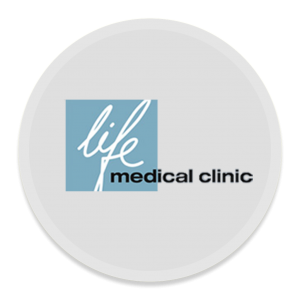Introduction
As healthcare facilities strive to become more customer-centric in their services, patient engagement is gaining a more prominent spotlight in the healthcare community. However, while the general public may have a vague idea about patient engagement, those within the industry are still getting used to this relatively new term.
Communication is vital when it comes to doctor-patient relationships, which can make a difference in the treatment outcomes of patients. It’s crucial to study doctor-patient relationships because poor communication between health professionals and patients can have several adverse consequences. Therefore, the physician-patient relationship is essential for providing good medical care.
What is a doctor-patient relationship?
The doctor-patient relationship is the core of ethical principles in medicine. It is defined by a majority of experts as the quality of interaction between a doctor and a patient that follows all the rules and procedures necessary for the assurance that the patient’s well-being remains the primary focus when treating an ailment or a condition.
What are the dimensions of doctor-patient relationships?
The relationship has two dimensions:
1. Instrumental Dimension
The instrumental component of medical care can be defined as the doctor’s competence in performing the technical aspects of care. This component involves concrete tasks that a doctor performs, for example, taking a patient’s history, performing physical examinations and prescribing treatments.
2. Expressive Dimension
While the physician’s technical skills are essential, many patients have come to value the “expressive” component of the interaction, which encompasses a range of cues such as tone, facial expression, body language, and demeanour. The expressive component of the doctor-patient relationship includes two parts: how expressively the physician interacts with the patient and how the physician perceives the patient. It also contains an “artistic” component, which directly impacts patient satisfaction and outcomes.
What are the different models of doctor-patient relationships?
There are 3 different types of models of doctor-patient relationships:
1. Active-passive model
The active-passive model is an older model of communication in which the physician acts upon the patient, treating the patient as an inanimate object. This model may be appropriate during an emergency when it is necessary to act quickly and avoid wasting time with consent or complicated conversations.
2. Guidance-cooperation model
In the guidance-cooperation model, doctors and patients work together to achieve the patient’s best state of health. The doctor is in power because they have medical knowledge about what will help the patient, and the patient is expected to respond accordingly with all cooperation. Still, both parties are expected to work together for the patient’s benefit.
3. Mutual participation model
The mutual participation model of treatment is based on active collaboration between the doctor and patient. The doctor and patient are viewed as equal partners in the healing process. The main principles of this model are that both parties should have an equal voice in the treatment process; both parties should be interdependent on each other for success, and both participate equally in the treatment goals being met.
What makes a good doctor-patient relationship?
1. Dynamism
Medical communication is a dynamic process involving verbal and nonverbal interactions between the physician and patient. The physician’s approach to communicating information to their patients has a significant impact on outcomes such as disease management, treatment adherence, patient-physician relationship and overall health. Effective communication can positively affect the patient’s health and help them return to their highest quality of life.
2. Trust
Simply put, trust is what makes a relationship work. And within the context of healthcare, trust is not just a nebulous concept ― it’s a central factor that drives successful physician-patient relationships. As healthcare transitions to value-based care, patients’ choices about who provides their care and how they receive it will increasingly influence trust.
Why is this relationship important?
The doctor and patient relationship is an essential aspect of the entire healthcare system, which is more of mutual respect. A bedrock of trust allows patients and their doctors to work together in their best interest. Ultimately, a physician-patient relationship can profoundly affect the entirety of care that a patient receives and vice versa. A positive doctor-patient relationship leads to better patient health outcomes and more efficient clinical care.
Patients who report having a close relationship with their physician show higher rates of health-seeking behaviour, full disclosure of medical information, better medication adherence and general compliance with medical advice. Physicians also report lower stress levels when communicating with patients who are more receptive to the doctor’s concerns.
The quality of healthcare that a patient receives often depends on several factors: the degree to which the patient is actively involved in their care. Research has shown that more fully engaged patients enjoy better overall health and have lower costs associated with treatment. Surprisingly, studies have also indicated that, in addition to lowering costs, actively involved patients have better outcomes, such as having higher survival rates after surgery and a greater likelihood of living longer.
Therefore, understanding the importance of doctor-patient relationships can help practitioners foster a stronger relationship with their patients and support overall patient health outcomes.
Conclusion
The Life Medical Clinic works to improve the quality of life for individuals and families through access to affordable, high-quality health care services personalised to each person’s needs and resources. We are committed to providing comprehensive medical programs throughout Australia by fostering primary care practices engaged in community health improvement.




